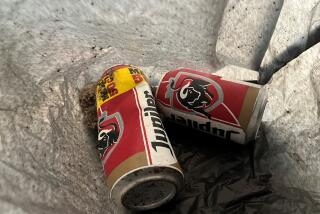Amsterdam’s Rijksmuseum returns to form, with light and life
- Share via
AMSTERDAM — A scrum of international TV reporters, photographers and other media packed the Gallery of Honor at the Rijksmuseum on a recent spring morning, while producers negotiated with publicists for time to shoot spots in front of Rembrandt’s 1642 painting “The Night Watch,” the museum’s crown jewel.
After 10 years of renovation at a cost of almost $500 million, the Netherlands’ national museum of history, art and culture was finally ready to greet its public.
From the outside, the museum is an imposing presence at the north end of Amsterdam’s Museum Plaza, which is also home to the Van Gogh Museum and the Stedelijk Museum, which unveiled an addition last year.
The original architect of the Rijksmuseum, Pierre Cuypers, designed the building at a time when railway stations and civic buildings were overtaking the cathedral as a city’s prime architectural wonder. Though he designed many churches and cathedrals in his career, he is probably best known for the Rijksmuseum and Amsterdam’s Central (rail) Station.
PHOTOS: Arts and culture by The Times
Cuypers’ central Gallery of Honor of the Rijksmuseum, with its stained glass entrance hall, side chapel galleries and altarpiece “Night Watch,” is a church in all but name.
Ever alert to anything remotely papist, King William III refused to set foot in “that cathedral” when the museum opened in 1885. His great-granddaughter Queen Beatrix appeared to have no qualms about reopening the museum last month before she stepped down as monarch.
After Cuypers died in 1921 the museum was stripped of its decorations and divided up; galleries built within galleries.
“When we arrived here, the building was dark, dim, and I would say sad,” said Antonio Ortiz, half of the Spanish architecture firm Ortiz y Cruz responsible for the renovation. “It was very difficult to orientate yourself, and the building could not accommodate the increasing amount of visitors.”
The building they delivered, along with restoration architect Van Hoogevest and designer Jean-Michel Wilmotte, restores Cuypers’ original vision, including terrazzo floors in the Great Hall and embellishments originally present in the Gallery of Honor.
More importantly, they have created a space that is full of light and life. Gray-blue paint, wood floors and the absence of direct light make the galleries feel warm, almost sensual. In the instances where no glass or display case was necessary, Wilmotte did not use one. A set of 10 15th century copper statues, called “The Weepers,” are close enough to touch.
Taco Dibbits, director of collections, was responsible for deciding which 8,000 pieces (less than 1% of the total collection) made the final cut. The museum is famous for its collection of Dutch masters, including Rembrandt, Vermeer, Franz Hals and Jan Steen.
“The 10 years of this renovation project gave us the possibility to entirely reinvent the display of our collection,” he said. “Chronology is a natural way of structuring history. We therefore made a mixed display. You will find galleries with furniture, objets d’art and paintings [all together].”
CHEAT SHEET: Spring Arts Preview
The scaled-down rooms keep the museum from being exhausting like the Louvre or the Victoria & Albert Museum in London. Here, altarpieces and statuary are mixed in with glass, wedding chests and the red wax seals of once-important men.
A crown built of cheap material by the English intended to impress the King of Ardra (now part of Benin in West Africa), kept as spoils by the Dutch when they intercepted the English ship, conveys more about Golden Age colonialism than even the simplest book.
Six toques worn by Dutch whalers for warmth and identification, like jockeys’ colors, were found on their owners’ skeletons nearly 400 years after they were buried.
In the southwest corner is the restored library Cuypers designed, the largest public art research library in the Netherlands. Books, monographs and periodicals both scholarly and popular, as well as a handful of children’s books fill every inch of the four stories of shelves.
ART: Can you guess the high price?
There are no video screens in the museum, a decision made on the basis that the technology is usually obsolete the moment it is installed. “We believe the works of art speak for themselves,” said Dibbits. “[Not using computers] shows that this art, like all great art, is contemporary.”
In the late afternoon of a preview day, after nearly everyone had left, there was a chance to see “The Night Watch” with just a security guard for company. Much bigger than the “Mona Lisa” at the Louvre, it has a powerful physical presence. The figures paused, not frozen.
“We want to make old masters relevant for a present-day audience” said museum general director Wim Pijbes. “The museum wants to inspire and also offer at the same time a chance to reflect.”
More to Read
The biggest entertainment stories
Get our big stories about Hollywood, film, television, music, arts, culture and more right in your inbox as soon as they publish.
You may occasionally receive promotional content from the Los Angeles Times.










